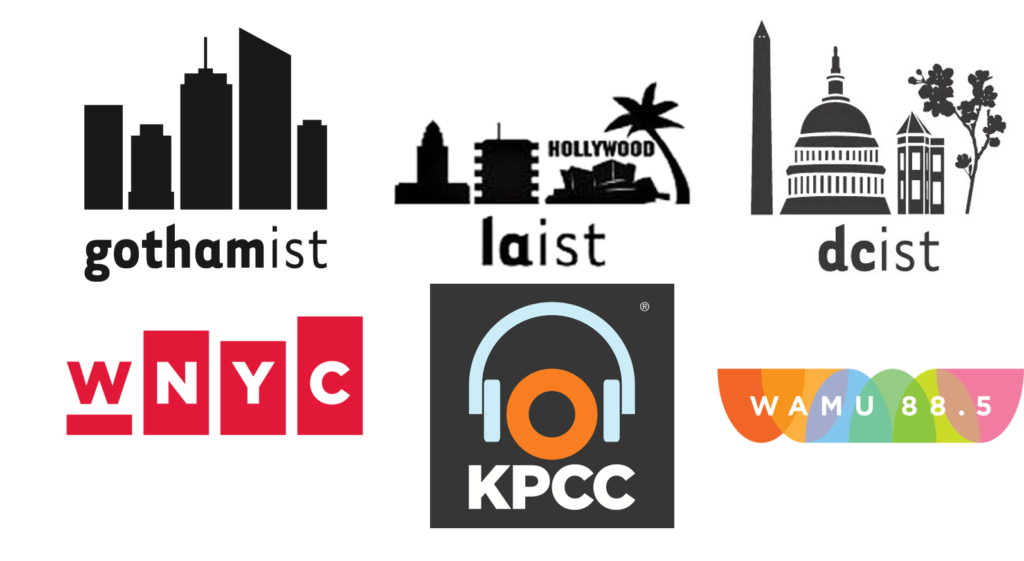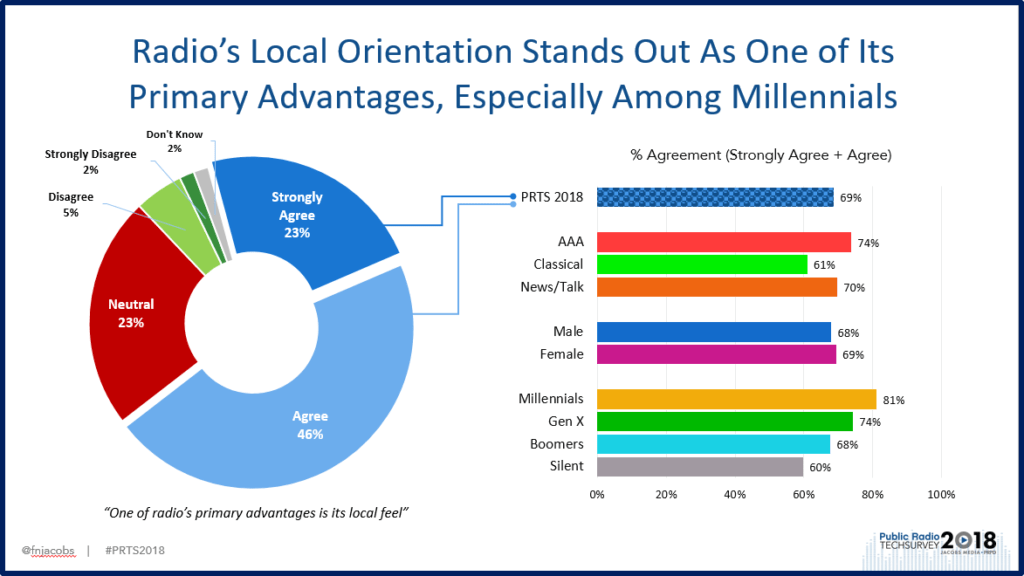
The good news about the Radio Show in Orlando last month is that digital is no longer a question, a debate, or an argument. It IS. And radio broadcasters are now actively seeking solutions, strategies, and partnerships in order to reap the benefits, while not being left behind.
The same, however, is not true about the question and value of “local” and its importance to radio station brands. As radio companies have grown bigger, achieving national scale, there is the obvious and understandable tendency to take advantage of the large “footprint.” Meantime, the preponderance of syndicated programming, aggregated mobile apps (iHeartRadio, Radio.com), group contesting, and tight promotional budgets make it more challenging for local radio to truly be local.
Many in radio aren’t sweating this, despite the fact their new competition is often national or global in scope. SiriusXM, Spotify, YouTube, Facebook, and others rely on their millions and billions of users across the country and around the planet to create value for advertisers and marketers.
So, where does that leave broadcast radio? As national business atrophies, and new media competitors swell, what options do stations in Tucson, Tulsa, or Trenton have in order to remain vital and viable to advertisers and marketers?
Interestingly enough, there may be clues on the public radio side of the street. That’s right – on the broadcast radio platform that doesn’t rely on 12 minutes of commercials every hour in order to pay the bills.
Many public radio operators have looked over their local landscapes and seen newspapers shutting down, local TV stations increasingly cutting back, and commercial News/Talk radio stations becoming ever more reliant on syndicated programming. That spells opportunity for a hometown news organizations with the vision to fill the ever-increasing voice in local news coverage.
Over the past couple years, public radio stations that focus on news are routinely seeing record-shattering ratings. You can check your own local Nielsen report, and chances are good your local News/Talk public radio station is knocking down impressive numbers. In some markets, they’ve actually achieved #1 status.
And yet, most of these stations are very dependent on network programming, whether it’s from NPR, PRI, APM, the BBC, or the myriad syndicated programs  available throughout the week, and on weekends. Most local shows on these stations are in the form of hometown talk shows during the midday hours, as well as feature news programs throughout the day. But few public radio News/Talk stations are near having local programming approach the 50% mark.
available throughout the week, and on weekends. Most local shows on these stations are in the form of hometown talk shows during the midday hours, as well as feature news programs throughout the day. But few public radio News/Talk stations are near having local programming approach the 50% mark.
Is that enough? How can network shows fulfill local needs, helping public radio stations stand apart because of its community coverage and emphasis?
A story in Current by Ian Fox reveals that three of the nation’s biggest and best public radio giants – WNYC (New York), KPCC (L.A.), and WAMU (D.C.) are all utilizing similar strategies to make sure local isn’t just something they pay lip service to.
And research shows that coverage of the metro area matters – a lot – to public radio listeners. Our Public Radio Techsurvey 2018 shows that nearly seven in ten core listeners agree or agree strongly with the sentiment that “One of public radio’s primary advantages is its local feel.” These are good numbers, but not great ones. In a perfect world, you’d like to see those “strongly agree” numbers looks…stronger. And note on the slide below its Millennials who put the most stock in public radio’s local orientation.

That spells opportunity, especially in an environment where local TV news has deteriorated while hometown newspapers are shrinking or disappearing at an alarming rate.
Can radio fill that local void?
WAMU, KPCC, and WAMU think so. This past February, they announced the acquisitions of these “ist” websites. Current notes they all have solid monthly web followings. And even better, their content is quirkier and more lifestyle oriented than what you’re likely to hear on the typical public radio News/Talk station.
And their “digital-first” nature makes them very attractive in the pursuit of younger audiences – something that was a popular topic at this summer’s PRPD Conference in Austin.
At that event, KPCC’s Chief Content Officer, Kristen Muller, spoke for many in public radio:
“As great as NPR is, it’s not going to substitute for serving targeted audiences in your city.”
Current reports these “ist” acquisitions and integrations are already lowering online demographics. Each brings a different tone and attitude to their public radio parents – a little sass that’s welcomed by many younger consumers.

And that can translate to not only content creation, but also to more flexibility with their all-important membership model. These public radio stations are experimenting with different models that incorporate “ist” content. And WAMU’s Chief Content Officer, Andi McDaniel respects what DCist brings to the table:
“We haven’t really wanted to do much altering or tweaking of what’s there; rather, just to build on it.”
Many commercial stations are achieving immediate ratings goals thanks to syndicated morning shows and other personalities beamed into their markets from afar. But the long-term health of the broadcast radio industry might just might just depend on doing a great job reflecting your neighborhood, your town, your tribe, and the community where you live.
Local matters, perhaps now more than ever.
- DJs And Baristas: Can They Save Their Companies? - May 2, 2025
- Radio’s New Audience Equation: Z Over Y = Trouble - May 1, 2025
- What Is It With Female Robot DJs? - April 30, 2025




Fred,
Tuned around (thanks internet)Boston radio stations on Sunday morning. The Pats-Chiefs game and the 2nd game of the ALCS between the Sox and Houston were happening in the market later in the day. The chatter was on the sports stations, mentions on the news stations and pretty much zip on the music stations. When the dust settled 83% of the television sets in use on Sunday in the Boston market were on one or both of the games. The Sox game was the highest rated game on cable and the Pats had more viewers than anything else on over the air TV nationally. Some PD should have wrangled some of the station tickets to those games and at least had an air staffer make a few calls to the station. With those TV numbers the games were all the “locals” cared about last Sunday.
Music stations often struggle to go beyond talking about their format genre, erring in the notion their audience is just into music. Of course, the other problem is the lack of LIVE talent on the radio Sunday morning. I’m thinking you were listening to shows mostly recorded the previous Friday. It’s hard to be “in the moment” 48 hours later. Appreciate the comment.